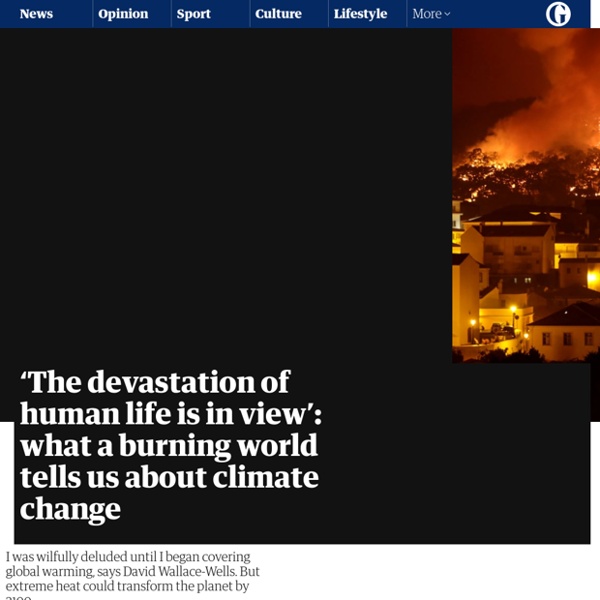



Climate Undermined by Lobbying For all the evidence that the benefits of reducing greenhouse gases outweigh the costs of regulation, disturbingly few domestic climate change policies have been enacted around the world so far. So say UC Santa Barbara professor and economist Kyle Meng, and co-author Ashwin Rode, a former UCSB Ph.D. student now at the University of Chicago, in a paper published in the journal Nature Climate Change. “There is a striking disconnect between what is needed to avoid dangerous climate change and what has actually been done to date,” said Meng, a professor in the Bren School of Environmental Science & Management and in the Department of Economics. One common explanation for that disconnect, he added, is that jurisdictions are reluctant to adopt climate policy when they can simply benefit from the reductions implemented by other jurisdictions. However, say Meng and Rode, the political process that leads to climate change regulation can be a barrier to its own legislation.
Plummeting insect numbers 'threaten collapse of nature' The world’s insects are hurtling down the path to extinction, threatening a “catastrophic collapse of nature’s ecosystems”, according to the first global scientific review. More than 40% of insect species are declining and a third are endangered, the analysis found. The rate of extinction is eight times faster than that of mammals, birds and reptiles. 60 Environmental Rules on the Way Out Under Trump 1. Revoked Obama-era flood standards for federal infrastructure projects This Obama-era rule, revoked by Mr. The Social Life of Forests The Social Life of Forests By Ferris Jabr Photographs by Brendan George Ko As a child, Suzanne Simard often roamed Canada’s old-growth forests with her siblings, building forts from fallen branches, foraging mushrooms and huckleberries and occasionally eating handfuls of dirt (she liked the taste). Her grandfather and uncles, meanwhile, worked nearby as horse loggers, using low-impact methods to selectively harvest cedar, Douglas fir and white pine. They took so few trees that Simard never noticed much of a difference. The forest seemed ageless and infinite, pillared with conifers, jeweled with raindrops and brimming with ferns and fairy bells.
The Uninhabitable Earth: David Wallace-Wells on the horrors of climate change “It is, I promise, worse than you think.” That was was the first line of David Wallace-Wells’s horrifying 2017 essay in New York magazine about climate change. It was an attempt to paint a very real picture of our not-too-distant future, a future filled with famines, political chaos, economic collapse, fierce resource competition, and a sun that “cooks us.” Wallace-Wells has since developed his terrifying essay into an even more terrifying book, titled The Uninhabitable Earth: Life After Warming. And it is a brutal read. Wallace-Wells was criticized in 2017 for being too hyperbolic, too doom-and-gloomy.
Muslim youth group cleans up national parks amid government shutdown Across the country, dozens of their colleagues in the Ahmadiyya Muslim Youth Association were doing the same at national parks closed or partially closed by the shutdown. They cleaned up litter, emptied garbage cans and swept the grounds -- from the Everglades National Park in Florida to Joshua Tree, California and the Cuyahoga Valley, Ohio. The group hit the National Mall in Washington on Sunday morning. "Service to our nation and cleanliness are important parts of Islam," said Dr. Madeel Abdullah, president of youth group, in a press release.
They’re Among the World’s Oldest Living Things. The Climate Crisis Is Killing Them. Sequoia Crest, Calif. — Until a few years ago, about the only thing that killed an old-growth giant sequoia was old age. Not only are they the biggest of the world’s trees, by volume — the General Sherman Tree, considered the largest, is 36 feet in diameter at its base and 275 feet tall — they are among the oldest. At least one fallen giant sequoia was estimated to have been more than 3,200 years old.
Non-survivable humid heatwaves for over 500 million people – Climate Guide Researchers at MIT warn that if climate change remains unchecked (Business As Usual-scenario = RCP 8.5) over half a billion people will, from 2070 onwards, experience humid heat waves that will kill even healthy people in the shade within 6 hours. The Wet Bulb Temperature (WBT) would exceed 35°C (95°F), at which the body – of any mammal – cannot cool itself, overheats and shuts down. Three regions were studied: China (2018), South Asia (2017) and the Persian Gulf (2015). Medicaid work requirements: Where do they stand after the blue wave? The 2018 midterm elections have dealt a significant setback to President Trump’s agenda in the legislative arena. However, there are still many ways for the Trump administration to keep swinging away at the Affordable Care Act. One particularly effective unilateral instrument is the regulatory process – that is, the implementation of statutory law by executive agencies.